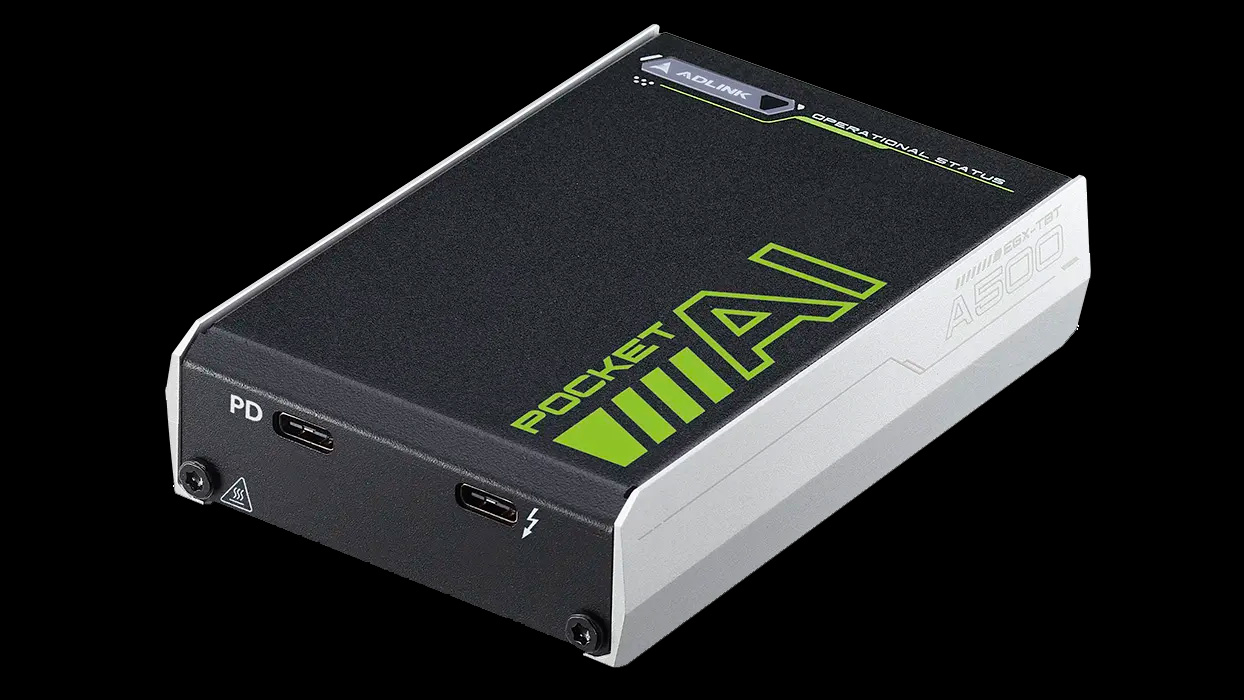
ADLink's portable RTX A500 Thunderbolt GPU was recently reviewed and benchmarked by StorageReview and was found to have good discrete GPU performance for the application it's designed for. The little pocket-sized discrete GPU is an RTX A500 GPU featuring 2048 CUDA cores, and benchmarks found it to be roughly 60% faster compared to integrated graphics solutions — such as Intel's Iris Xe graphics — in GPU-accelerated non-gaming tasks like Luxmark and AI.
Storage Review benchmarked the little GPU in Luxmark Hall, Luxmark Food, and Procyon AI Inference and found the Pocket GPU performed well for its intended role. In a comparison against an Intel Iris Xe iGPU sporting 96 EUs, the Pocket GPU was 54% faster in Luxmark Hall with 3979 points. In Luxmark Food the Pocket GPU was 52% faster with a score of 1837 (vs 869), and in Procyon AI Inference it was 77% faster with a score of 264 (vs 59).
Storage Review also benchmarked an RTX A5000 laptop GPU against the RTX A500, just to see how much slower it was. The RTX A5000 laptop unsurprisingly ran circles around the Pocket GPU, averaging roughly 65% greater performance.
But this is completely expected since an external form factor does not make a mobile GPU substantially quicker — a 2048-core Ampere GPU will still behave like a 2048-core Ampere GPU outside of a laptop chassis. Ironically, the RTX A500 in the Pocket GPU is actually an underclocked unit, sporting a measly 435MHz base clock and an underwhelming 1335Mhz boost clock. TechPowerUp reported this GPU as having a substantially quicker 1440MHz base clock and a 1770MHz boost clock for the reference design. The GPU maker probably reduced the clock speeds significantly to keep the GPU at its 25W TDP — which is 3x smaller than the reference GPU's 60W rating.
The ADLink Pocket AI GPU is one of the most unique external graphics solutions on the market. It focuses on providing discrete GPU power to laptops or other mobile devices that might not come with a built-in discrete GPU. The unit is about the size of your hand and features a full-blown RTX A500 GPU (the professional equivalent to an RTX 3050), and connects to compatible devices via Thunderbolt 3.
The unit isn't particularly impressive on its own — it has the performance of an entry-level GPU from 2021. However, it is very handy for businesses or professionals who need a bit of extra juice to run AI workloads, video editing applications, or other programs that might need a discrete GPU.
The GPU's specs include 2,048 CUDA cores, 64 Tensor cores, and just 16 RT cores operating on a 64-bit wide bus with up to 96GB/s. The unit consumes 25W of power and utilizes up to four PCIe Gen 3 lanes thanks to the Thunderbolt 3 interface.
Regardless, the Pocket GPU can be optimal for niche cases in which discrete GPU power is needed to run AI applications in a pinch. Even though it's pretty slow compared to more powerful solutions, and comes priced at a whopping $429, it is basically the only GPU of its kind and is marketed specifically toward AI acceleration — a feature most GPU-less laptops don't have, with the exception of AMD's new Phoenix chips.







